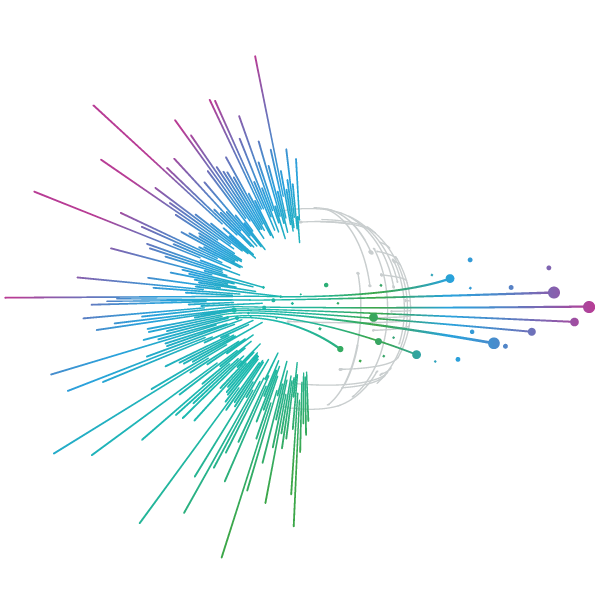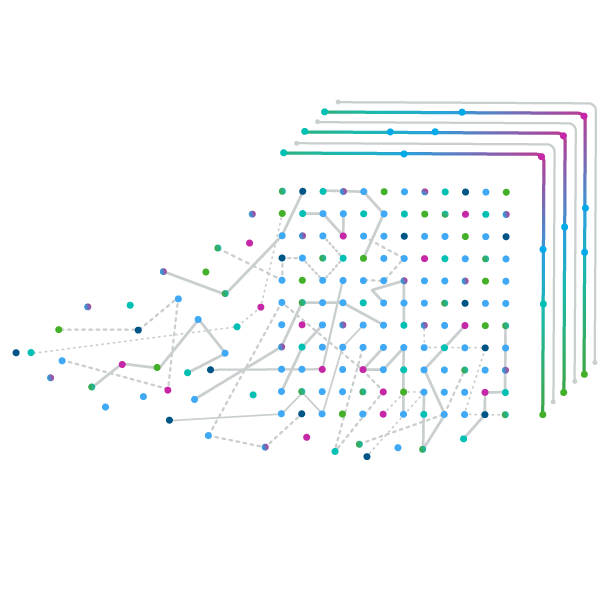Leverage numerous infectious disease and vaccine experts using best-in-class data sources and the right sites.
Development of messenger RNA (mRNA) vaccines for preventive and therapeutic uses has advanced rapidly over the last decade. Applications include infectious diseases (which also account for 70% of ongoing mRNA vaccine trials), regenerative medicine, immunotherapy, genetic disorders, and cancer.1 Advantages of these over conventional ones include speed of production, scalability, safety, versatility, and effectiveness.2
At the 2024 World Vaccine Congress Washington, three key trends in mRNA vaccine development were highlighted: the evolution of linear mRNA vaccines towards self-amplifying RNA (saRNA) and circular RNA (circRNA) technologies; the development of more effective T-cell vaccines; and improvements in assays for T cells.
Evolution from linear mRNA to next-generation saRNA and circRNA vaccinesThe unprecedented speed of vaccine development for COVID-19 built on advances in linear mRNA technology starting in the 1990s. Compared with traditional approaches to vaccines – which can take five to ten years to develop, involving culturing of large volumes of viruses – mRNA-based vaccines can be developed and manufactured quickly. During the pandemic, vaccines that received any type of approval globally took an average of seven months from initiation of clinical development to emergency use authorization by the U.S. Food and Drug Administration (FDA). These timelines were 94% shorter than for benchmark vaccine development over the prior decade.3
However, limitations of linear mRNA vaccines include the need for a relatively high dose and the short duration of immunity. The next generation technology for mRNA vaccine design uses viral-based self-amplifying mRNAs (replicons) that potentially offer long-lasting humoral and cellular immune responses from single, low-dose immunization. 4This saRNA adds a “photocopier gene” to mRNA vaccines, which may make them last longer and curb side effects. 5Preclinical data suggest that an saRNA vaccine could achieve equivalent protection against influenza at 1/64th of the dose of a linear mRNA vaccine. This dose reduction would likely minimize reactogenicity symptoms such as swelling at the injection site and fever, while potentially increasing the duration of effect, from around six months for linear mRNA to 12 months or more for saRNA. Possible applications for saRNA technology include vaccines that were originally based on linear mRNA, such as those for respiratory syncytial virus (RSV) and influenza.
Another option for vaccine applications is circRNA, which is in early-stage development. Unlike linear mRNA, circRNA has a closed loop structure.6 This structure offers high pharmaceutical stability and biostability compared with linear mRNA. 7 8 While this approach appears to elicit robust immune responses, there are manufacturing challenges to overcome.
Development of more effective T-cell vaccinesWork is underway on technology to develop vaccines that efficiently amplify T cell immunity. Induction of T-cell mediated responses are key, accounting for life-long immunity to diseases such as chicken pox. While all vaccines lead to some T cell immunity, antibody response is often the primary objective. For example, seasonal flu vaccines are designed to increase production of antibodies to the latest strains. A more durable effect might result from targeting central proteins within the virus. The most effective vaccines are likely to employ both cellular and humoral immune responses.9
Artificial intelligence (AI)-driven approaches are currently being applied to develop three-dimensional models of viruses and to design proteins that could inactivate multiple peptides in the core of the virus. Vaccines focused on inducing T-cell immunity are being developed in indications such as influenza, RSV and Epstein-Barr virus. These are all at preliminary stages of development, with some entering early-phase clinical trials. Research is underway with funding from the Biomedical Advanced Research and Development Authority (BARDA), which awarded $1.4 billion for new tools and technologies to combat COVID-19 in August 2023.10
Improvements in T-cell assaysImproved T-cell assays are needed for accurate measurement of responses to vaccines designed to induce T-cell immunity. Vaccine trial protocols are increasingly requiring monitoring of participants’ peripheral blood mononuclear cells (PBMCs) for this purpose. However, collection and processing of PBMCs is challenging for many clinical research sites. Various broader assays for T cells and interleukins are being developed. Innovations include stabilization of PBMCs, making collection and processing more straightforward, and ensuring accurate and viable results.
In future, these next-generation approaches – including saRNA, circRNA and T-cell vaccines – have potential to provide long-lasting immunity at lower doses, and with minimal reactogenicity. With the ability to be developed and manufactured quickly, these approaches will offer new tools for responding to new infectious diseases and emerging variants.
For more information on advancements in vaccine technology, read this additional blog.
References
1Al Fayez N, Nassar MS, Alshehri AA, Alnefaie MK, Almughem FA, Alshehri BY, Alawad AO, Tawfik EA. Recent Advancement in mRNA Vaccine Development and Applications. Pharmaceutics. 2023 Jul 18;15(7):1972. doi: 10.3390/pharmaceutics15071972. PMID: 37514158; PMCID: PMC10384963.
2Al Fayez N, Nassar MS, Alshehri AA, Alnefaie MK, Almughem FA, Alshehri BY, Alawad AO, Tawfik EA. Recent Advancement in mRNA Vaccine Development and Applications. Pharmaceutics. 2023 Jul 18;15(7):1972. doi: 10.3390/pharmaceutics15071972. PMID: 37514158; PMCID: PMC10384963.
3Aitken M, Connelly N, Leamy V. Lessons Learned from COVID-19 Vaccine Trials: A CRO Perspective. IQVIA, April 28, 2022 [cited 2024Apr23]. Available from: https://www.iqvia.com/insights/the-iqvia-institute/reports-and-publications/reports/lesson-learned-from-covid-19-vaccine-trials#:~:text=A%20CRO%20explicit%20analysis%20of,and%20clinical%20development%20model%20improvements.
4Comes JDG, Pijlman GP, Hick TAH. Rise of the RNA machines - self-amplification in mRNA vaccine design. Trends Biotechnol. 2023 Nov;41(11):1417-1429. doi: 10.1016/j.tibtech.2023.05.007. Epub 2023 Jun 14. PMID: 37328401; PMCID: PMC10266560. https://www.cell.com/trends/biotechnology/fulltext/S0167-7799(23)00154-3
5Willyard C. The next generation of mRNA vaccines is on its way. MIT Technology Review, February 2, 2024 [cited 2024Apr23]. Available from: https://www.technologyreview.com/2024/02/02/1087536/the-next-generation-of-mrna-vaccines-is-on-its-way/
6Niu D, Wu Y, Lian J. Circular RNA vaccine in disease prevention and treatment. Sig Transduct Target Ther 8, 341 (2023). https://www.nature.com/articles/s41392-023-01561-x
7Liu X, Zhang Y, Zhou S, Dain L, Mei L, Zhu G. Circular RNA: An emerging frontier in RNA therapeutic targets, RNA therapeutics, and mRNA vaccines. J Control Release. 2022 Aug;348:84-94. doi: 10.1016/j.jconrel.2022.05.043. Epub 2022 Jun 2. PMID: 35649485; PMCID: PMC9644292. https://www.ncbi.nlm.nih.gov/pmc/articles/PMC9644292/
8Zhao X, Zhong Y, Wang X, Shen J, An W. Advances in Circular RNA and Its Applications. Int J Med Sci. 2022 May 27;19(6):975-985. doi: 10.7150/ijms.71840. PMID: 35813288; PMCID: PMC9254372.
9Ura T, Takeuchi M, Kawagoe T, Mizuki N, Okuda K, Shimada M. Current Vaccine Platforms in Enhancing T-Cell Response. Vaccines (Basel). 2022 Aug 21;10(8):1367. doi: 10.3390/vaccines10081367. PMID: 36016254; PMCID: PMC9413345. https://www.ncbi.nlm.nih.gov/pmc/articles/PMC9413345/
10U.S. Department of Health and Human Services [Internet]. HHS; 2023Aug22 [cited 2024Apr24]. Press Release. Project NextGen Awards Over $1.4 Billion to Develop the Future of COVID-19 Vaccines and Therapeutics. Available from: https://www.hhs.gov/about/news/2023/08/22/funding-1-billion-vaccine-clinical-trials-326-million-new-monoclonal-antibody-100-million-explore-novel-vaccine-therapeuti-technologies.html
Related solutions
Leverage a global network of Phase I clinical pharmacology units to build diversity in patient populations and access a range of geographic regions for early clinical development (ECD) programs.
Access new resources for advanced therapy development, from candidate identification through market authorization.

























